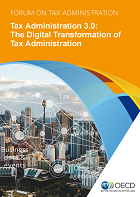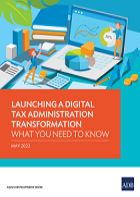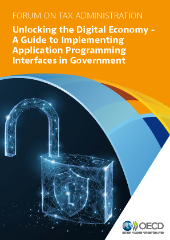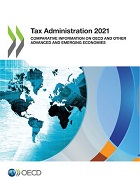Taxpayer touchpoints
Communicating, interacting and facilitating engagements with taxpayers is core to the smooth running of tax administration. This is managed and supported through a number of touchpoints, varying from: face-to-face interactions, phone calls, multifunction websites, e-services, to business management systems. These taxpayer touchpoints help to resolve friction where it arises, for example a lack of understanding, unusual circumstances that require further discussion with the administration, processes not working as they should etc.
New digital services
Advances in digitalisation allow tax administrations to improve existing taxpayer touchpoints or create new ones. Over the past years, many tax administrations have introduced new e-services, ranging from integrated taxpayer accounts to mobile applications to digital mailboxes. Some services are now being further enhanced by using innovative technologies, such as artificial intelligence (AI) and real-time interactions. For example, a growing number of tax administrations report using AI in virtual assistants to help respond to taxpayer enquiries and support self-service.
Understanding taxpayer needs
As part of this process, tax administrations need to have a solid understanding of customer expectations as those might change over time and shift significantly between different profiles of taxpayers and stakeholders. While many administrations already measure the satisfaction of taxpayers and intermediaries, it is important to look beyond overall satisfaction with the administration and understand the overall customer journey as well as the experience related to the various touchpoints.
Providing seamless experiences
Touchpoints can also be embedded into taxpayers’ natural systems allowing them to have a seamless experience, allowing tax to become an integrated part of daily life and doing business, thus fundamentally changing taxpayer engagement with the administration. Key enablers for achieving such integration are application programming interfaces (APIs) which allow tools developed by third parties to digitally interact with the tax administration systems without providing direct access to those systems.
Taxpayers touchpoints
Note: To understand fully the information included in this map, users are advised to look at the source data tables and the original survey question as some of the self-reported data may not give the full picture and may need to be looked at in the wider context of the survey.
Sources: Tables TT5, TT6 and TT7
Data tables
The following tables provide details on the taxpayer touchpoints that have been created by tax administrations. The tables also show how administrations assist third parties in developing tools that can digitally interact with the tax administration systems without providing direct access. The information is provided for tax administrations that have participated in the global survey on digitalisation of tax administrations.
|
Online services |
These tables show (by tax type) for which interactions tax administrations are offering online services. For certain interactions, the tables also indicate whether taxpayer receive automated responses, i.e. without human intervention. |
|
Services for users that have no online access or disabilities |
This table indicates whether administrations offer specific approaches to taxpayers that do not have online access or have visual, auditory, motor or cognitive disabilities. |
|
Interactions using AI and/or pre-programmed rules |
This table gives details on the use of AI and/or pre-programmed rules during interactions with taxpayers, such as virtual assistants. |
|
Measuring taxpayer experience |
This table holds information about administrations measuring taxpayer experience in using online services. |
|
Software and API development |
This table contains information on whether tax administrations (co‑)create software packages that assist taxpayers to fulfil their tax obligations. It also holds information regarding the development of APIs by tax administrations. |
|
API interactions |
These tables indicate (by tax type) for which interactions tax administrations have published APIs that allow third parties to integrate interactions into their products. |
Further information
Related Documents





